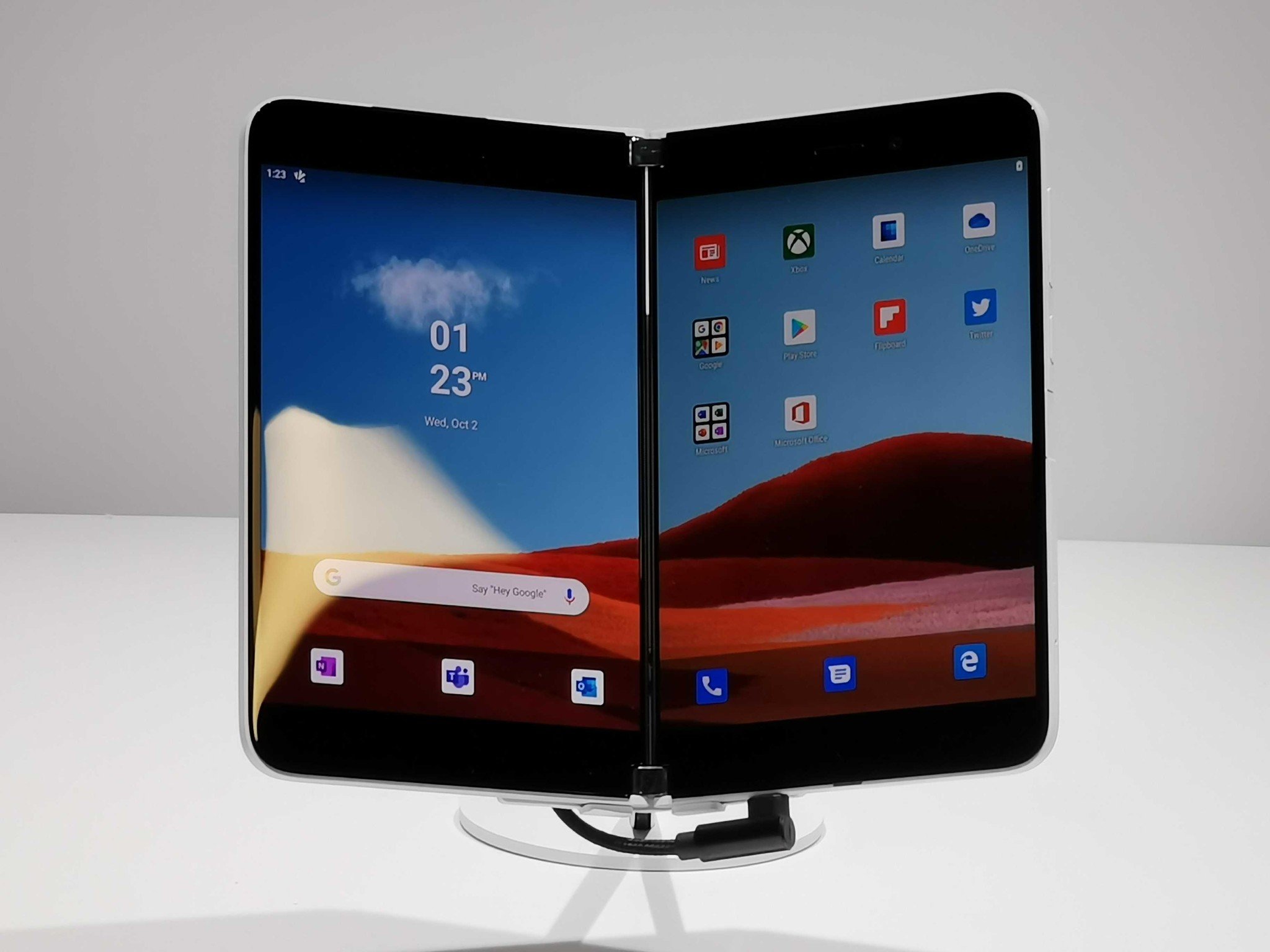Microsoft announces dual-screen preview SDK for Surface Duo
Developers can get started on making content for the Surface Duo and dual-screen devices.

What you need to know
- Microsoft released a dual-screen preview SDK for the Surface Duo.
- A preview SDK for the Surface Duo is available now.
- A pre-release version of the Windows 10X SDK will be available "in the coming weeks."
Microsoft released a preview SDK for the Surface Duo and discussed upcoming previews for Windows 10X. A new blog post from Microsoft breaks down Microsoft's plans for dual-screen devices, and how developers will gain access to relevant SDKs over time.
In context - this feels even more magical. pic.twitter.com/8yLLoioE1KIn context - this feels even more magical. pic.twitter.com/8yLLoioE1K— Jonas Daehnert (@PhoneDesigner) January 22, 2020January 22, 2020
Microsoft announced the availability of the preview SDK for the Surface Duo. Microsoft states that the preview SDK allows developers to see how they can take advantage of dual-screen experiences, including:
- Native Java APIs to support dual-screen development for the Surface Duo device, including the DisplayMask API, Hinge Angle Sensor, and new device capabilities.
- An Android Emulator with a preview Surface Duo image that is integrated into Android Studio so you can test your app without a physical device. The emulator simulates postures, gestures, hinge angle, mimicking the seam between the two screens, and more. We'll continue to add functionality over time.
- Requirements: For the Android Studio and Android Emulator.
Developers will also see a pre-release version of the Windows SDK to help develop content for Windows 10X in the coming weeks. Microsoft's goal is to release a Microsoft Emulator on February 11 and to share new APIs for dual-screen support, additional documentation, and code samples, including:
- Native Windows APIs for dual-screen development to enable your app to span the two screens, detect the hinge position, and take advantage of Windows 10X.
- Microsoft Emulator is a dual-screen Hyper-V emulator so you can deploy your existing Universal Windows Platform (UWP) and Win32 apps and test in both single-and dual-screen scenarios. The emulator simulates the physical device so you can see how your apps interact with Windows 10X.
- Requirements: A recent Windows Insiders preview build of 64-bit Windows 10 (Pro, Enterprise, or Education), 64bit CPU with 4 cores, 8GB minimum (16GB of RAM recommended), Hyper-V enabled and dedicated GPU that supports Direct X 11.0 or later.
Additionally, Microsoft announced new web standard proposals to enable dual-screen experiences for websites on Android and Windows 10X.
To help developers work on dual-screen devices, Microsoft will hold Microsoft 365 Developer Day on February 11 at 8:30 am PDT. The event is focused on dual-screen experiences and will cover several topics, including how to:
- Get the most out of these SDKs and emulators
- Use cross platform tools and languages
- Design apps for dual-screen devices
- Build dual-screen experiences on the web
- Connect your apps with Microsoft 365
With the Surface Duo, Surface Neo, and several dual-screen PCs on the way, optimizing content for multiple displays is increasingly important for Microsoft. Getting developers on board early is an important step to optimizing these devices.
All the latest news, reviews, and guides for Windows and Xbox diehards.

Sean Endicott is a tech journalist at Windows Central, specializing in Windows, Microsoft software, AI, and PCs. He's covered major launches, from Windows 10 and 11 to the rise of AI tools like ChatGPT. Sean's journey began with the Lumia 930, leading to strong ties with app developers. Outside writing, he coaches American football, utilizing Microsoft services to manage his team. He studied broadcast journalism at Nottingham Trent University and is active on X @SeanEndicott_ and Threads @sean_endicott_.
